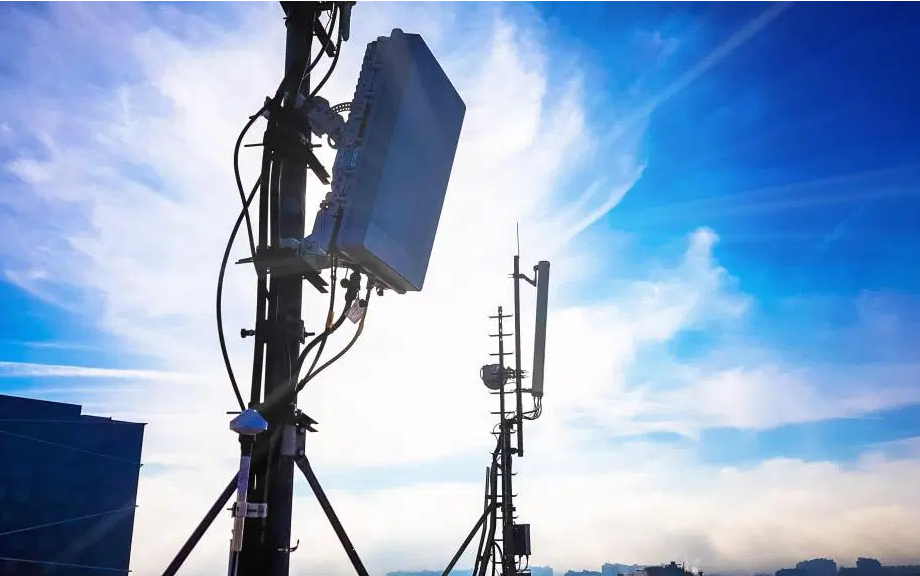If you've ever wandered through a town you might have noticed tiny 5G cell towers on street light poles. They appear like tiny boxes, but they're actually broadcasting wireless signals from cellular providers to your phone.
These smaller towers are replacing larger built cell towers. While they're less noticeable but they can still create issues for users.
It is the of the FCC's Radiation Exposure Thresholds
The FCC's Radiation Exposure Thresholds define the safe distance that a person can be exposed to electromagnetic energy generated by wireless devices. The limits of exposure are based upon scientific research which prove that electromagnetic energy could be harmful to human health.
The absorption rate specific (SAR) is an indication of the amount of radiofrequency energy absorbed by tissue. It's usually 1.6 Watts per kilogram calculated over one gram of tissue.
But, since 5g operates at higher frequencies this could be able to increase the intensity of energy on the skin as well as other body areas. This could lead to various potential harms, including exacerbated development of skin diseases such as dermatitis, skin cancer and cataracts.
/cloudfront-us-east-1.images.arcpublishing.com/gray/PEQATZL6V5AVPJZ5PZ4K5DJBIE.png)

Because of the potentially harmful effects of radiation from 5G, PSU has chosen to create a general power density limit of 4 mW/cm2 averaged on 1cm2, but not exceeding 30 minutes for all 5G services running at 3000 GHz. This localized limit is consistent with the maximum SAR spatial-average of 1.6 W/kg, averaged over one g of tissue at 6 GHz.
The FCC's Maximum Exposure Thresholds
Have you ever used a cell phone, you probably know that the safest distance from the tower is around 400 meters. This is because the power of transmission from a cell tower increases dramatically the further your location from the tower.
While this sounds like something that's good, the reality is that those living close to towers might be more susceptible to health problems. For example, a study from 2014 in India found that those living within 50 meters of cell towers experienced significantly more health complaints than those who lived farther far from antennas.
But, what is a safe distance from a cell tower revealed that those who relocated to areas that were further from cell towers noticed their symptoms return to normal within a couple of days. Other studies have shown that exposure to high amounts of electromagnetic field radiofrequency (EMFs) can cause brain tumors, cancers and other health issues.
This is due to the fact that RF radiation, which is used in wireless communication, can penetrate the human body's outer layer, which is the skin. safe distance to live from cell phone tower is vital to be aware of since the skin functions as a protective barrier against mechanical injury, infection by pathogenic microorganisms, and infiltration of toxic substances. The skin is the largest organ of the human body, and is responsible for maintaining the integrity of other organs.
The FCC's Minimum Exposure Thresholds for the Minimum Exposure
The FCC's Minimum Exposition Thresholds are based upon various assumptions that aren't supported by scientific evidence. These include the erroneous belief that short-term exposures RF radiation is safe because of the minimal penetration into the body (i.e., tissue heating).
This assumption does not take into account the deeper penetration of the ELF parts of the modulated RF signal as well as the effects of short bursts of heat from pulsed RF waves. safe distance from cell tower are not compatible with current understanding of the biological consequences of RF radiation, and thus, they should not be used for health protective exposure standards.
In addition to that, ICNIRP and FCC are limiting the maximum limits of exposure to peak local SARs that are based on the peak frequency of absorption (psSAR) which is an inadequate dosimetric tool for determining the level of exposure to RF radiation. Particularly the psSAR tool is not accurate for frequencies that exceed 6 GHz. In addition, psSAR is not been tested for RF radiation exposed to other agents of the environment such as sunlight. The interactions of RF radiation and other agents in the environment could cause synergistic or antagonistic results. This would result in an increased risk of adverse health adverse effects. For safe distance from cell tower , exposure to RF radiation with sunlight may increase the risk of skin cancer and exacerbate other skin diseases such as acne.
